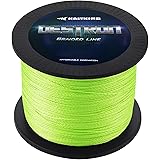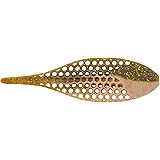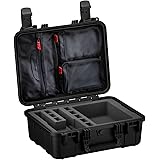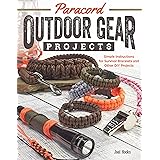Essential Wilderness Survival Skills for Beginners
Mastering basic wilderness survival techniques is crucial for anyone venturing into the great outdoors. As seen in the compelling video above, participants face raw challenges, demonstrating that even fundamental skills like starting a fire or securing food can be incredibly difficult without the right knowledge and persistence. This article will expand on these vital lessons, offering practical, beginner-friendly insights into core survival practices.
The journey into wilderness survival often begins with understanding how to provide for your most immediate needs: warmth, water, food, and shelter. The video highlights firsthand experiences with these elements, showing how determination and resourcefulness pave the way to overcoming formidable obstacles.
Conquering Fire: Ignition in Challenging Conditions
Starting a fire is not just about warmth; it’s also for cooking, purifying water, signaling, and psychological comfort. The video vividly illustrates Kat’s struggle to ignite a flame in wet conditions, emphasizing her repeated attempts and the critical need for a sustained fire on a cold island. She even resorted to carefully dissecting her son’s stuffed bunny for cotton tinder—a testament to desperate times and the power of improvisation.
Wet environments present significant hurdles for fire starting. Standard tinder materials become damp and difficult to ignite. Therefore, the ability to find and prepare effective tinder is paramount. Here’s how you can improve your chances:
- Gathering Dry Tinder: Look under overhangs, inside hollow logs, or at the base of large trees where rain might not have reached. Birch bark, inner cedar bark, dried grass, and even some fungi can make excellent tinder.
- Utilizing Improvised Tinders: Like Kat, you might need to get creative. Cotton balls, petroleum jelly-soaked cotton, dryer lint, or even fine wood shavings from the inside of a dead, standing tree can work wonders.
- Feather Sticks: Creating thin, curly shavings on a stick by cutting upwards with a knife exposes dry wood and increases surface area for ignition. This is a highly effective method when all external wood is damp.
- Ignition Sources: While a lighter or waterproof matches are ideal, friction fire methods like a bow drill or hand drill are classic survival skills that can work with practice. Even a ferro rod and striker produce intense sparks that can ignite well-prepared tinder.
The key takeaway from Kat’s experience is perseverance. Success in fire starting, especially when conditions are not ideal, often comes down to trying again and again until you achieve a stable flame.
Primitive Trapping: Securing Food in the Wild
Hunting and trapping provide essential protein when other food sources are scarce. Kat’s construction of a bird trap demonstrates a fundamental principle of primitive trapping: using simple mechanics and readily available materials. Her design, utilizing cordage, sticks, and a trigger mechanism baited with a toad bone, is a classic approach to snaring small game.
Understanding animal behavior is crucial for effective trapping. Setting traps along game trails, near water sources, or where you observe signs of activity significantly increases your odds. Here are some basic considerations for primitive traps:
- The Four Elements: Most primitive traps consist of a bait/lure, a trigger, a killing/holding mechanism, and anchoring. Kat’s trap clearly shows these elements.
- Snares: These are among the simplest and most effective traps for small game. A basic snare involves a loop of wire or cordage set to tighten around an animal’s neck or leg as it passes through.
- Deadfalls: These traps use a heavy object (like a log or rock) propped up by a trigger stick. When an animal disturbs the trigger, the heavy object falls, crushing the animal.
- Ethics and Legality: Always be aware of local regulations regarding hunting and trapping, even in survival situations. Practicing these skills in a safe, legal environment is important.
The effective placement and proper baiting of your trap, as Kat illustrated with her toad bone, are often more important than the complexity of the trap itself. Observation and patience are vital when relying on traps for sustenance.
Preparing Hides: Crafting Clothing and Tools
Beyond food, animals provide other vital resources, such as hides for clothing, shelter, and cordage. Billy’s methodical process of tanning a nutria hide to create a loincloth demonstrates an ancient and invaluable survival skill. From soaking the skin to allow crayfish to assist with flesh removal, to scraping and drying, he transforms raw material into a usable item. The satisfaction of wearing his self-made garment shows the profound impact of such a feat.
Tanning is the process of treating animal hides to prevent decomposition and make them pliable. Billy’s method, involving flesh removal and drying, is a foundational step. Further steps can include:
- Scraping: Removing all flesh and membrane from the hide is critical. Billy used a scraping tool to clean the skin thoroughly, making it thinner and more flexible.
- Brain Tanning: This traditional method uses the animal’s own brain matter, which contains lecithin, to soften and preserve the hide. After applying the brain, the hide is stretched, worked, and often smoked for added preservation and water resistance.
- Bark Tanning: Using tannins extracted from tree bark (like oak or hemlock) can also preserve hides, though it’s a longer process.
- Softening: Regardless of the tanning agent, significant “working” of the hide (stretching, pulling, scraping) is necessary to break down the fibers and achieve a soft, pliable texture. Billy’s final scraping and flexing achieved this for his loincloth.
The ability to process animal hides provides not only clothing but also materials for bags, shelters, and repairs, significantly increasing comfort and self-sufficiency in a long-term wilderness survival scenario.
Building Robust Shelters: Your Wilderness Home
Shelter provides protection from the elements, conserves body heat, and offers a sense of security. Joe’s joy in constructing a “proper sheltered, shaded home” underscores the immense satisfaction and practical benefit of a well-built shelter. Moving from sheltering behind a stone wall to creating a more enclosed space with pillars represents a significant upgrade in wilderness living quality.
A good shelter should be able to withstand wind, rain, and cold. For beginners, simple lean-tos, debris huts, or even snow caves (in appropriate climates) are good starting points. Key considerations include:
- Location: Choose a spot that is naturally sheltered from wind, free from overhead deadfall, and on high ground to avoid flooding.
- Insulation: Joe’s shelter provides structural integrity, but adding layers of leaves, pine needles, or moss can drastically improve insulation against cold.
- Waterproofing: A tarp is ideal, but natural materials like large bark sheets, interwoven branches, or thick layers of leaves can provide effective rain protection.
- Size: Make your shelter just big enough for you. A smaller space is easier to heat and maintain warmth.
- Ventilation: While warmth is crucial, some ventilation is important, especially if you plan to have a fire nearby (outside, with proper safety).
The feeling of safety and comfort a sturdy shelter provides, as described by Joe, is a significant boost to morale and critical for enduring harsh conditions.
The Indomitable Spirit: Mental Fortitude in Wilderness Survival
Beyond the physical skills, a strong mental attitude is arguably the most important tool in any wilderness survival kit. The participants’ resilience, their ability to negotiate setbacks, and their ultimate triumphs in starting fires, making clothes, or building homes, showcase the power of perseverance. Kat’s determination despite repeated fire failures, and Billy’s satisfaction with his new loincloth, demonstrate that a positive mindset and adaptability are invaluable assets.
Wilderness survival tips aren’t just about techniques; they are about fostering an unbreakable will to survive and thrive.











